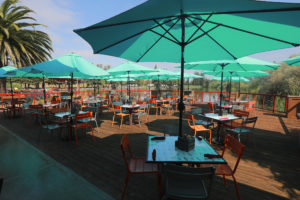You have to love getting a physics lesson from a simple kitchen task: Gravity, for example, seems particularly enamored of demonstrating to me her unwavering commitment, most often when I’m in a rush, by recasting my own kitchen floor as some vast cemetery plot for the night’s dead soldiers, the busted egg shells, the shattered crystal of a wine glass, the shards of a Pyrex prep bowl, the inevitable seasoning of too much floor-spice. But nowhere is your high school science teacher more elegantly remembered than in the humble pot of boiling water at the heart of this post: Thermodynamics, chemistry, and physics, all roiling away together, just so we can eat pasta for dinner.
Most of us, however, don’t boil our pasta water correctly, because adding salt to water in order to cause the water to boil more quickly remains one of the enduring urban legends of the home kitchen. In point of fact, salty water takes longer to boil than pure water, because salt in solution raises its boiling point; a higher boiling point means that the water must get hotter in order to boil, and to get hotter requires a larger transfer of energy from your burner to the water; and thus, if your burner is already maxed out on ‘high’, then there isn’t much you can do to get the water hotter, except to wait longer. (Unless you have a Spinal Tap burner that goes to eleven, but that’s more a question of technological metaphysics than it is of thermodynamics.)
Thus faced with a pot of water, a burner with fixed number of maximum BTUs and a package of uncooked pasta, what, then, is the home cook to do? As I understand it, it’s all about why water bubbles when it’s boiled, which is a story about lots of tiny water molecules careening into one another so rapidly that they literally knock each other out of the pot and into the surrounding atmosphere. (Somewhat off-thread, but this also explains why water boils at lower temperatures above sea level: With less atmospheric pressure leaning down on the surface of the water, it takes less energy to kick the little guys up and out into the thinner air.) The specific phenomenon about which home cooks everywhere have been misled for generations is called boiling-point elevation, and dictates that the point at which a liquid will turn into a gas – a fancy way of saying “it boils” – will rise if you incorporate something n0n-volatile (something itself not prone to boiling, such as salt – alcoho, with its lower equilibrium vapor pressure, would have the opposite effect) into it.
I have an entirely unconfirmed pet theory about the root of the confusion: At some point, in some kitchen, some cook who didn’t ditch chemistry in high school figured out that if adding salt to water makes the water boil at a higher temperature (which, as we’ve discussed, is true), then it should also make the food quick more quickly (which also happens to be true – hotter water, faster cooking). But then somewhere down the line, in a multi-generational game of kitchen telephone, some cook who skipped class a bit more frequently, erroneously conflated cooking quickly with boiling quickly – when, somewhat counterintuitively, the two are actually opposing concepts.
Armed with this knowledge, we can definitively settle the proper approach to boiling water: If you want the water to boil more rapidly, you should add the salt only after the water begins to boil, and then return it to the boil before cooking. The salty water will, upon boiling, be hotter, so you might think you’d have to worry about cooking times, but the practical reality is otherwise, because you’re unlikely ever to use enough salt to matter: The conventional advice for salting pasta water, for example, is to use about an ounce of salt per quart of cooking water. But such a quantity will only raise the boiling point by about 1 degree Fahrenheit, or less than 0.5%.
Class dismissed!









